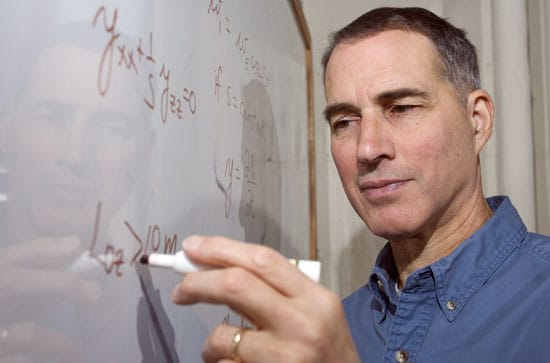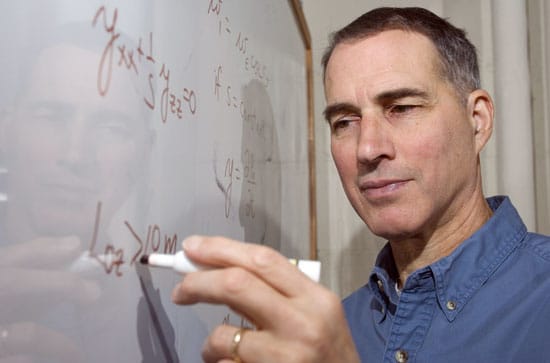Jim Ledwell Awarded Agassiz Medal by National Academy of Sciences

February 7, 2007
Oceanographer Jim Ledwell of the Woods Hole Oceanographic Institution (WHOI) has been selected as the winner of the 2007 Alexander Agassiz Medal, awarded by the U.S. National Academy of Sciences (NAS). Ledwell, a senior scientist in the Department of Applied Ocean Physics and Engineering, specializes in the use of chemical tracers to observe currents in the ocean.
Established in 1913, the Agassiz Medal is awarded every three years to an individual scientist for original and fundamental contributions to oceanography. The medal and prize of $15,000 will be officially presented to Ledwell at an April 29 ceremony in Washington, DC.
Ledwell was specifically cited by the Academy for his “innovative and insightful tracer experiments using sulfur hexafluoride to understand vertical diffusivity and turbulent mixing in the open ocean.” To measure the mixing and stirring effects of eddies and internal waves, Ledwell “marks” parcels of water by releasing harmless dyes or chemicals from ships and then measures the subsequent dispersion (sometimes for several years). Such work aids oceanographers in understanding the circulation of the ocean and the transport of nutrients, plankton, and pollutants in ocean ecosystems– all of which are important to marine life and to the ocean’s role in climate change.
Ledwell and colleagues, including Andrew Watson of the University of East Anglia (England), developed the techniques in the basins off Southern California in the 1980s, with advice and encouragement from Wallace Broecker of Columbia University. Over the past two decades, Ledwell has played a leading role in tracer release experiments in the North Atlantic thermocline, in the deep Brazil Basin, on the continental shelf off New England, in the upper layers of the Sargasso Sea, and, most recently, in the area of hydrothermal vents on the East Pacific Rise southwest of Mexico.
“Recognition of my work by my peers is the best affirmation of the path I have taken,” said Ledwell. “Recognition of this sort is so rare, and this award incites me to carry on.”
Ledwell grew up in Rockland, Mass., and attended Cardinal Spellman High School in nearby Brockton. He was awarded a bachelor’s degree in physics from Boston College, followed by a master’s in physics from the University of Massachusetts at Amherst in 1974. He completed master’s and doctoral degrees in applied physics from Harvard University with Prof. Michael McElroy. He then became a postdoctoral research associate at the Goddard Institute for Space Studies, with James Hansen, and a research scientist at Columbia University’s Lamont-Doherty Earth Observatory, before joining WHOI in 1990. Ledwell is a member of the American Geophysical Union, the American Meteorological Society, and The Oceanography Society.
Past WHOI recipients of the Agassiz Medal include Henry Bigelow, Columbus Iselin, Alfred Redfield, Fritz Fuglister, John Steele, and Henry Stommel.
The Woods Hole Oceanographic Institution is a private, independent organization in Falmouth, Mass., dedicated to marine research, engineering, and higher education. Established in 1930 on a recommendation from the National Academy of Sciences, its primary mission is to understand the oceans and their interaction with the Earth as a whole, and to communicate a basic understanding of the ocean’s role in the changing global environment.
The National Academy of Sciences is a private, nonprofit honorific society of distinguished scholars engaged in scientific and engineering research, dedicated to the furtherance of science and technology and to their use for the general welfare. Since 1863, the National Academy of Sciences has served to “investigate, examine, experiment, and report upon any subject of science or art” whenever called upon to do so by any department of the government.


